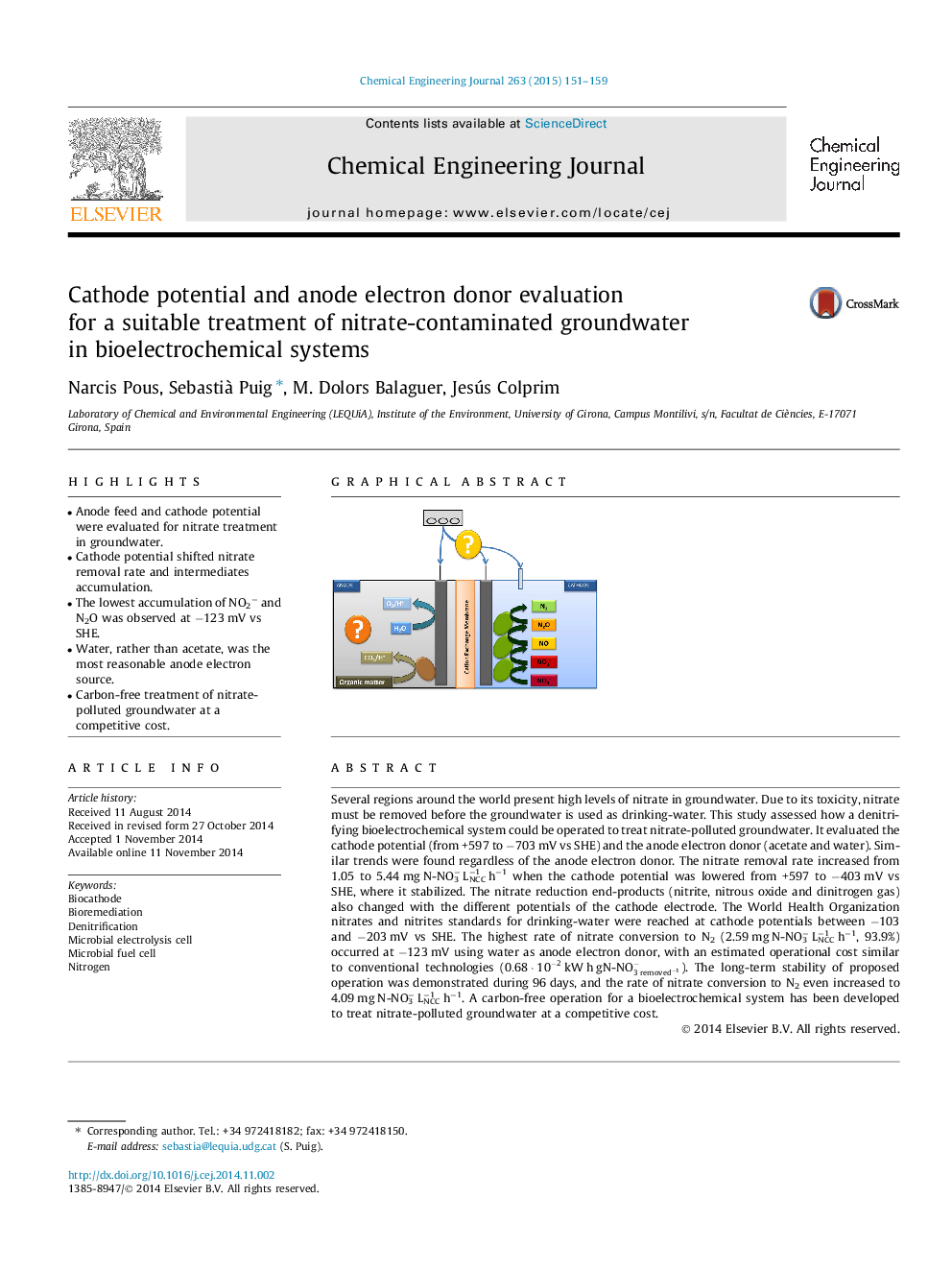| کد مقاله | کد نشریه | سال انتشار | مقاله انگلیسی | نسخه تمام متن |
|---|---|---|---|---|
| 146679 | 456376 | 2015 | 9 صفحه PDF | دانلود رایگان |
• Anode feed and cathode potential were evaluated for nitrate treatment in groundwater.
• Cathode potential shifted nitrate removal rate and intermediates accumulation.
• The lowest accumulation of NO2− and N2O was observed at −123 mV vs SHE.
• Water, rather than acetate, was the most reasonable anode electron source.
• Carbon-free treatment of nitrate-polluted groundwater at a competitive cost.
Several regions around the world present high levels of nitrate in groundwater. Due to its toxicity, nitrate must be removed before the groundwater is used as drinking-water. This study assessed how a denitrifying bioelectrochemical system could be operated to treat nitrate-polluted groundwater. It evaluated the cathode potential (from +597 to −703 mV vs SHE) and the anode electron donor (acetate and water). Similar trends were found regardless of the anode electron donor. The nitrate removal rate increased from 1.05 to 5.44 mg N-NO3− LNCC−1 h−1 when the cathode potential was lowered from +597 to −403 mV vs SHE, where it stabilized. The nitrate reduction end-products (nitrite, nitrous oxide and dinitrogen gas) also changed with the different potentials of the cathode electrode. The World Health Organization nitrates and nitrites standards for drinking-water were reached at cathode potentials between −103 and −203 mV vs SHE. The highest rate of nitrate conversion to N2 (2.59 mg N-NO3− LNCC−1 h−1, 93.9%) occurred at −123 mV using water as anode electron donor, with an estimated operational cost similar to conventional technologies (0.68·10-2kWhgN-NO3-removed-1). The long-term stability of proposed operation was demonstrated during 96 days, and the rate of nitrate conversion to N2 even increased to 4.09 mg N-NO3− LNCC−1 h−1. A carbon-free operation for a bioelectrochemical system has been developed to treat nitrate-polluted groundwater at a competitive cost.
Figure optionsDownload as PowerPoint slide
Journal: Chemical Engineering Journal - Volume 263, 1 March 2015, Pages 151–159
